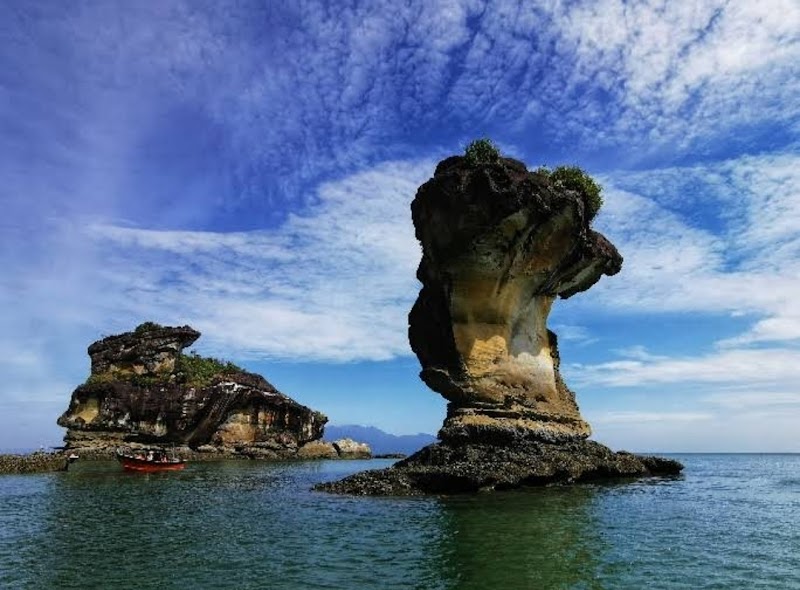
Experience the Sarawak Regatta in Kuching, where traditional boat races over the winding Sarawak River blend fierce competition with rich culture. Plan your visit with practical tips to enjoy this vibrant riverside festival, from timing and gear to local insights.
Stay Hydrated All Day
The tropical heat around the Sarawak Regatta demands constant hydration. Carry a refillable water bottle and drink frequently to maintain energy during long sessions of watching or participating.
Use Comfortable Footwear
Expect mixed terrain on the riverbanks from concrete to soft soil. Supportive and breathable shoes will keep you steady and comfortable for hours of walking and standing.
Arrive Early for Best Viewing
Crowds swell midday. Early arrival not only catches cooler temperatures but helps secure prime spots along the river where you can fully appreciate the races and ceremonial aspects.
Plan Around Weather Patterns
Sarawak’s tropical weather can include sudden showers. Check forecasts and pack lightweight rain protection to avoid disruptions during the festival.
Sailing the Spirit of Sarawak: A Practical Guide to the Sarawak Regatta in Kuching
Every July, the Sarawak Regatta transforms Kuching’s serene rivers into a bustling arena where tradition and teamwork race side by side. This historic event invites adventurers and culture seekers alike to witness native communities fiercely engage in boat races that test speed, skill, and local pride. Along the Sarawak River, adorned by the city’s proud skyline and leafy banks, boats cut through water that dares you to keep up.
Originating from a tribal festival meant to celebrate unity and strength, the Regatta has evolved into a competitive spectacle featuring canoes, longboats, and paddled crafts, each crew synchronized to an ancient rhythm. Watching it, you can almost hear the currents pushing forward, eager to outpace every challenger. The atmosphere is charged yet practical — families root for their tribes, vendors fill the air with local flavors, and the riverbanks offer easy spots for spectators.
Planning a visit? Kuching, the nearest city, is your strategic base. The event typically spans several days, allowing you to absorb the races and sample riverside culture. Bring lightweight, breathable clothing—humidity laces the air here with a lush insistence—and gear up with good walking shoes; the terrain around the riverbanks shifts from paved promenades to uneven earth.
Stay hydrated; the equatorial sun is unrelenting, and the excitement fuels your need for constant refreshment. Morning and late afternoon present the best viewing conditions—not only for cooler temperatures but to catch the sun playing on rippling water as the boats surge ahead. Pack a hat and sunscreen to keep the elements at bay.
Beyond the spectacle, the Regatta provides a gateway to Sarawak’s living heritage. Every paddle stroke is an echo of ancient ceremonies tied to the land and river that shaped this region’s identity. For adventurers, it's a chance to engage with a culture fiercely itself—not tamed, but respected. Expect vibrant processions, native dances, and stilt-clad houses peering over the water, each lending a layer of meaning to the swift currents beneath.
Whether you’re here for the competition, the cultural exchange, or the thrill of witnessing an event intact with its roots, the Sarawak Regatta in Kuching offers an engaging experience with both adrenaline and heart. Prepare practically, arrive early to nab good vantage points, and let the river dare you to experience Sarawak at its most dynamic.
Nearby Trips
All Adventures
Boat Charters
Water Activities
Adventures near Kuching, Sarawak
Discover the unique and memorable adventures that make Kuching, Sarawak special.
Frequently Asked Questions
What is the best way to reach the Sarawak Regatta site in Kuching?
The Regatta takes place along the Sarawak River, easily accessible by foot or local taxis from Kuching city center. Public buses also run routes along the waterfront, but taxis provide more direct convenience, especially for visitors with limited time.
Are the Sarawak Regatta events suitable for families and children?
Yes, the Sarawak Regatta is family-friendly with safe viewing areas, local food stalls, and cultural performances that captivate all ages. However, supervise children closely near the water and crowded spots.
What local wildlife might be spotted near the Regatta?
The Sarawak River is home to fish species like the Asian Arowana and occasional water birds such as kingfishers and herons, which may be seen darting above the water’s surface during races.
Is there any cultural etiquette visitors should follow at the Sarawak Regatta?
Respect is paramount. Engage politely with local tribes and performers, do not cross designated areas during ceremonies, and ask before photographing people, especially during traditional dances.
Can visitors participate in any Regatta activities?
Some community workshops and canoeing demos are available during the festival, offering visitors a hands-on glimpse into the paddling skills required. Check local schedules early as spots fill quickly.
How environmentally friendly is the festival?
The Regatta emphasizes environmental respect, with organizers promoting waste reduction and using traditional materials for boats and decorations. Visitors are encouraged to dispose of trash responsibly and support eco-conscious vendors.
Recommended Gear
Breathable Walking Shoes
Helps you stay comfortable over mixed terrain and long periods on your feet.
Reusable Water Bottle
Essential for staying hydrated in hot, humid weather.
Light Rain Jacket
Quick protection against tropical afternoon showers.
Wide-Brim Hat
Keeps the intense equatorial sun from draining your energy.
Local Insights
Hidden Gems
- "Fort Margherita viewing deck offers a quieter spot to enjoy race panoramas"
- "Annah Rais Bidayuh longhouse village nearby reveals traditional communal life"
Wildlife
- "Sarawak River dolphins occasionally appear upriver"
- "Colorful dragonflies patrol riverbanks, signaling ecological health"
History
"The Sarawak Regatta dates back over 100 years, originally a tribal competition to celebrate harvest and unity, evolving into a cultural showcase preserving indigenous arts and boat craft."
